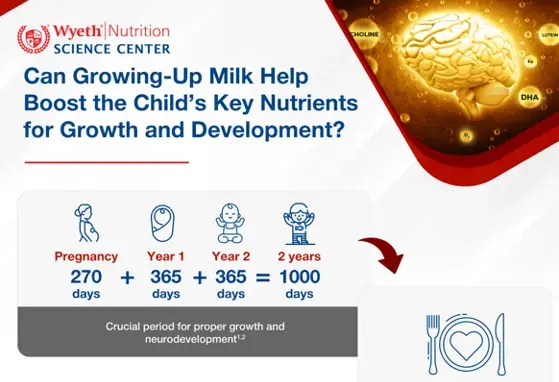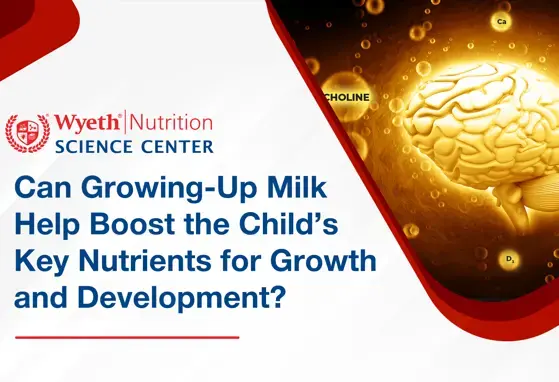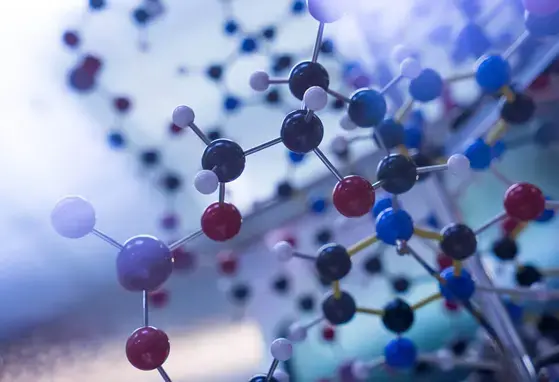Interview with Dr. Susan Carlson - Fats of Life: DHA and its Role at Different Life Stages

We recently had the privilege to speak with Dr Susan Carlson, AJ Rice Professor of Nutrition in the Department of Dietetics and Nutrition at the University of Kansas, USA. During the interview, Dr Carlson shared her insights on the physiological functions of docosahexaenoic acid (DHA), and discussed its role at different developmental stages. This article presents highlights from the interview.
- Physiological functions of docosahexaenoic acid (DHA)
- Role of DHA at different developmental stages

Dr Susan E. Carlson, PhD
Department of Dietetics and Nutrition,
The University of Kansas Medical Center
Kansas City, KS, USA
WYE-EM-221-JUL-14
Introduction
Omega-3 fatty acids, including the biologically active DHA and eicosapentaenoic acid (EPA), are dietary fats with an array of health benefits. Both observational and interventional studies have shown that these fatty acids are vital for optimal foetal development and have been linked to improved cognitive function and visual acuity.1, 2 Since the body cannot synthesize essential omega-3 fatty acids de novo, humans must rely on dietary sources of omega-3 fatty acids.
- Basics of omega-3 fatty acids
- Physiological role of DHA at different life stages
- DHA intake recommendations
- Addressing the DHA nutrition gap: Practical tips for healthcare professionals (HCPs)
- Summary
SC: Dr Susan Carlson
R: Reporter
Basics of omega-3 fatty acids
R: What are the physiological effects of DHA and where can DHA be found in the body?
SC: DHA is found in the cell membrane of all mammalian cells but the amount differs in each organ or tissue. EPA and DHA in cell membranes are components of membrane phospholipids.3 The brain and retina have particularly high concentrations of DHA.4,5 DHA influences signal transduction but it is now understood that DHA released from membranes, and perhaps circulating as a free fatty acid, can be converted to important anti-inflammatory and inflammation-resolving mediators.6
R: While both EPA and DHA are omega-3 fatty acids, how do they differ in their chemical structures and functions?
SC: DHA has 22 carbon atoms and 6 double bonds, while EPA consists of 20 carbon atoms and 5 double bonds. Both may be oxygenated to resolvins and protectins with the anti-inflammatory and inflammation-resolving characteristics mentioned above.6 This also appears to be the case for an intermediate, n-3 docosapentaenoic acid (DPA), which has 22 carbons and 5 double bonds.7
Inflammation is mediated through eicosanoids, which are mainly metabolites of omega-6 fatty acids. EPA and DHA (and also DPA) have anti-inflammatory properties.6 DHA influences the ‘fluidity' of neuronal membranes because it is found in membrane phospholipids in typically greater amounts than EPA. The influence on membrane fluidity may underscore the cognitive benefits associated with DHA.8 Traditionally, fish oil containing a mixture of EPA and DHA is used in clinical trials. As such, the independent effects of these two fatty acids are not easy to separate when evaluating clinical outcomes. Trials with relatively pure sources of these fatty acids would be needed to better understand the individual benefits of EPA and DHA.
Physiological role of DHA at different life stages
R: What is the role of DHA in the cognitive development of children and adolescents?
SC: As previously discussed, DHA is essential for optimal brain development. Brain development and growth continue throughout childhood and adolescence. For example, brain myelination continues throughout childhood and adolescence,9 and tissue content of DHA is important for this development. DHA-rich frontal lobes are thought to be responsible for higher-order cognitive activities in children, such as problem-solving.10, 11
DHA-rich frontal lobes are thought to be responsible for higher-order cognitive activities in children, such as problem solving
R: What is the role of DHA in the cognitive health of adults and older adults?
SC: Evidence suggests that adequate DHA intake may help in the retention of cognitive ability in adults. A number of studies have shown that higher DHA status is associated with a lower incidence of Alzheimer's disease, as well as vascular dementia.12
DHA intake recommendations
R: What are the current recommendations for dietary DHA intake in children and adults?
SC: Several expert bodies have made recommendations for optimal DHA intake among various populations. The joint World Health Organization/Food and Agriculture Organization (WHO/FAO) of the United Nations guidelines recommended a daily DHA intake of at least 200 mg for pregnant and breastfeeding mothers, and 10–12 mg/kg for infants aged 6 months to 2 years (Table). For children aged 2–18 years and adults, these intakes can be achieved by consuming one to two meals of fatty fish per week.13
R: Are these recommendations being followed? Does geographical location or age influence dietary DHA intake?
SC: Yes, DHA intake is quite variable and highest in populations that consume more seafood. The USA just issued guidelines encouraging pregnant women to consume 8–12 oz of seafood per week from a variety of seafood types.14 Most women in the USA eat less than this amount. Geographical differences may contribute to the gap between DHA intake and recommended levels. Ubiquitous high consumption of seafood may account for increased DHA intake in those living in coastal regions.15 Differences in age may also contribute to DHA supplementation disparities. In the USA, fish oil supplements are routinely prescribed alongside statins for older adults at risk for cardiovascular disease.
DHA intake in multiple age groups is lower than the current dietary recommendations
Table. WHO/FAO recommendations of DHA and EPA dietary intake in children and adults13
| Fatty acid | Age group/stage | Daily recommended intake |
|---|---|---|
| DHA | 0–6 months | 0.20–0.36% of fatty acids consumed |
| 6–24 months | 10–12 mg/kg | |
| Pregnancy and lactation | 200 mg | |
| EPA + DHA | 2–4 years old | 100–150 mg |
| 4–6 years old | 150–200 mg | |
| 6–10 years old | 200–250 mg |
DHA, docosahexaenoic acid; EPA, eicosapentaenoic acid; WHO/FAO, World Health Organization/Food and Agriculture Organization
Addressing the DHA nutrition gap: Practical tips for healthcare professionals (HCPs)
- HCPs should educate their patients, particularly those who do not meet the dietary recommendations of two servings of fish per week, on the importance of adequate DHA intake.
- Alternative food sources, such as eggs and tuna, may be recommended to increase dietary DHA during the second 6 months of life. They can be safely included in the weaning diet without any clinically significant effect on plasma cholesterol. Eggs are also a good source of choline,16 which may be important after weaning.
- To date, no tolerable upper limit of intake has been established for DHA consumption. While the US Food and Drug Administration has recommended no more than 3,000 mg/day of omega-3 fatty acids,16 this does not mean that a higher intake could not also be safely consumed.
SummaryCurrent evidence suggests that DHA is vital for cognitive development and function, especially during the first 2 years of life and early childhood. Increased awareness of the recommended levels, dietary sources and the role of supplementation can ensure optimal DHA intake. |
WYE-EM-151-MAY-14
Reference
- Jensen CL. Am J Clin Nutr 2006;83:1452S-1457S.
- Colombo J, et al. Child Dev 2004;75:1254-1267.
- Kidd PM. Altern Med Rev 2007;12:207-227.
- Greenberg JA, et al. Rev Obstet Gynecol 2008;1:162-169.
- Connor WE, et al. J Lipid Res 1990;31:237-247.
- Calder PC. Proc Nutr Soc 2012;71:284-289.
- Arita M, et al. Proc Natl Acad Sci USA 2005;102:7671-7676.
- Carughi A, et al. FASEB J 2010;24(Meeting abstract suppl):939.12.
- Brown TT, Jernigan TL. Neuropsychol Rev 2012;22:313-333.
- Cheatham CL, et al. Lipids 2011;46:637-645.
- Willatts P, et al. Lancet 1998;352:688-691.
- Cole GM, Frautschy SA. J Nutr 2010;140:869-874.
- Food and Agriculture Organization of the United Nations. Fats and fatty acids in human nutrition: Report of an expert consultation. In: FAO Food And Nutrition Paper 91; 2008. Available at: http://www.fao.org/docrep/013/i1953e/i1953e00.pdf. Accessed 9 June 2014.
- US Department of Agriculture, US Department of Health and Human Services. Dietary Guidelines for Americans; 2010. Available at: www.dietaryguidelines.gov. Accessed 9 June 2014.
- Nahab F, et al. Neurology 2011;76:154-158.
- US Food and Drug Administration. New dietary ingredient notification for omega-3 phospholipids; 2006. Available at: http://www.fda.gov/ohrms/dockets/dockets/95s0316/95s-0316-rpt0354-02-vol272.pdf. Accessed 9 June 2014.
If you liked this post you may also like

Infographic - Can Growing-Up Milk Help Boost the Child's Key Nutrients for Growth and development?

The Learning Lead - Volume 2, 2024: "Can Growing-Up Milk Help Boost The Child’s Key Nutrients for Growth and Development?"

Maternal Dietary Intake and Human Milk Composition
